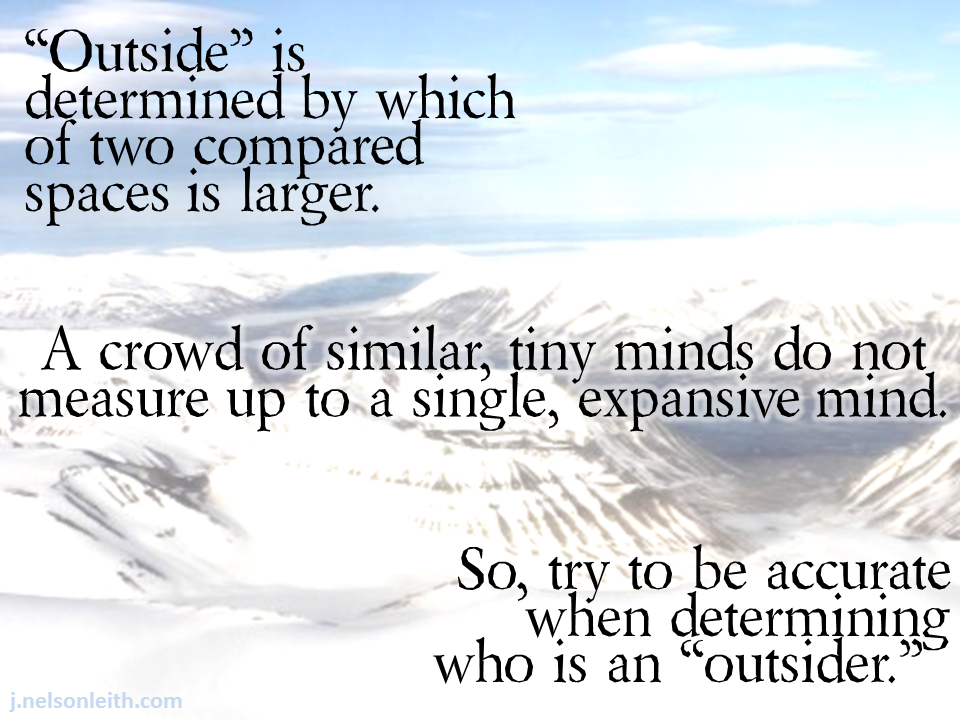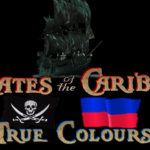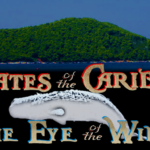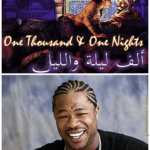


 Juliette Wade’s TalkToYoUniverse blog, which focuses on worldbuilding, has long been one of my favorite writing resources. And, a recent post on one of my favorite films, Who Framed Roger Rabbit?, confirmed my enthusiasm.
Juliette Wade’s TalkToYoUniverse blog, which focuses on worldbuilding, has long been one of my favorite writing resources. And, a recent post on one of my favorite films, Who Framed Roger Rabbit?, confirmed my enthusiasm.
It’s rare to see a serious function of storytelling applied to what many might dismiss as escapist fiction but, when you have a universal principle, by definition it must have no boundaries.
Take a look at Ms. Wade’s analysis. It will help you be a better reader, a better viewer, and a better writer!

 Editor and former literary agent Mary Cunnane recently took a swipe at publishing pros who publicly wallow in the disdain they feel for writers, using social media to broadcast “the sins of yet another supplicant who failed to contact her in the preferred manner, didn’t read her submission guidelines, or asked her to be friends on Facebook and then sent her a publishing pitch. The nerve.”
Editor and former literary agent Mary Cunnane recently took a swipe at publishing pros who publicly wallow in the disdain they feel for writers, using social media to broadcast “the sins of yet another supplicant who failed to contact her in the preferred manner, didn’t read her submission guidelines, or asked her to be friends on Facebook and then sent her a publishing pitch. The nerve.”
As you can guess, Cunnane’s take is less than sympathetic. She tells of one publishing pro whose tweets detail “how exhausted she is from her many travails: manuscripts to read; rights fairs to prepare for; dinner parties and literary festivals to attend … #Queryfail, though, is what seems to send her over the edge, scrabbling for the smelling salts to ward off the vapours.”
In fact, her main point is to scold her colleagues for their arrogance and cruelty:
The tone of exasperation, irritation, and sometimes even downright anger is telling. Someone is trying to get the attention of a publishing professional and is breaching the rules and/or being unrealistic and/or totally clueless. Those folks are the outsiders, the others are the insiders. God help the first if they annoy the second… SlushPile Hell, rejection, #queryfail – all signal an air of entitlement and a sense of besiegement, the last perhaps a sign of the anxious, proverbial-over-tea-kettle state publishing has been in since 2008. But without writers, publishers are nowhere: should they therefore be made to feel they must storm the battlements in order to get even a look-in?
(Of course, I would add to Cunnane’s jeremiad that, in many cases the gate-keepers of traditional publishing create their own barbarians by broadcasting encouragement to every Tom, Jill, and Mary that they should write a novel.)
And, to be clear, Cunnane is not talking about the gentle, head-shaking, “what was this person thinking?” type of after-action humor we all engage in. She admits to having “tweeted about a silly query, e.g. ‘To The Mary Cunnane Agency. Dear Sir’.”
What’s she’s talking about is public shaming, essentially a relational aggression tactic: establishing a brute-force pecking order that conveys, even to good writers, how they had damn-well-better behave if they know what’s good for them.
But, what struck me most about Cunnane’s literary finger-wagging was how vividly it reminded me of what might have been the best dating advice I ever received in my life.

 This is the second installment of my Writing Archetypes series, where I talk about certain roles, scenes, and plot points that can be found repeated in many stories. They synchronize stories with the narrative instincts of the human mind, and imbue them with a distinct psychological presence.
This is the second installment of my Writing Archetypes series, where I talk about certain roles, scenes, and plot points that can be found repeated in many stories. They synchronize stories with the narrative instincts of the human mind, and imbue them with a distinct psychological presence.
You don’t have to be a dyed-in-the-wool Jungian to recognize that archetypes are a core element in storytelling. You don’t even have to like the term “archetype.” Call them what you like: tropes, memes, patterns, threads, modes, models, Platonic forms, şurôt, whatever.
But, no matter what you call them or why they exist, they do exist, and they have undeniable storytelling power.
During the last installment about the Hero, we learned a little about Companions, Gurus, Villains, etc. Today we explore one of the more obscure character archetypes, but nevertheless one that’s been around since ancient times: the Rough.
_

 In a piece called “One Wrong Move,” John Austin at Fresh Pulp Magazine brought up an important point about storytelling while discussing the film White House Down.
In a piece called “One Wrong Move,” John Austin at Fresh Pulp Magazine brought up an important point about storytelling while discussing the film White House Down.
I won’t tell you what scene brought out this epiphany, but here is what John says about it:
… It takes very little to destroy something like a film. That one moment in “White House Down” made me regret the preceding 90 minutes. I felt stupid. I felt like the people who made the film were making fun of me. To my mind it was like they were saying “hey, let’s make this film with decent dialogue, great action, get the viewers hooked on it, and then make them eat a giant shit sandwich with this one sequence.”
I completely empathize with this “Aww, why’d you have to do that?” moment. However, we shouldn’t take this merely as a warning, but also an opportunity. It may be proverbial that any tool for good can be turned to evil, but the reverse is also true.
If One Wrong Move can spoil a story, then One Right Move can make it.
One well-done aspect of a story can really send its overall quality soaring. My favorite example is an acting choice made by Bill Nighy while playing Davy Jones.* When Sparrow maneuvers Jones into trading other people’s souls for his own, Jack asserts: “Now we’re just just haggling over price.” In response, Jones simply repeats the critical word, “Price?” and makes a plopping sound with a puff of air through his lips.
For me, that single sound—signifying both that he dismisses Jack’s self-congratulatory cleverness and yet is considering the offer—simply made the character of Jones. It was relaxed, unpretentious, and hinted at casual malice without being melodramatic.
Keeping in mind that the small stuff really can make or break a story can dramatically improve your chances of editing out your One Wrong Move … and saving your right ones.
_
* You’d think this trilogy is the only story I ever want to comment on, but I comment about it a lot because I believe its complexity and depth as story are massively under-appreciated.

 You may have seen the first two episodes of this experiment in the bare bones of storytelling, The Eye of the Wind and Cat o’ Nine Tails. If not, you should check out the final version on their new page, here.
You may have seen the first two episodes of this experiment in the bare bones of storytelling, The Eye of the Wind and Cat o’ Nine Tails. If not, you should check out the final version on their new page, here.
The basic idea was to demonstrate how a few basic tent-poles of character (through dialogue), setting (through imagery), theme, and plot can convey the power of a story, over which the remaining cloth can be draped later.
As it turned out, the exercise is also a good example of how to incorporate the eight-sequence method, Brian McDonald’s “invisible ink,” and elements of Blake Snyder’s beat sheet to keep a story arc on track. Once you have this framework in place, it’s much easier to work out the filler scenes—which shouldn’t be thought of as “filler” material at all! These scenes should support, accentuate, and harmonize with the tent-pole material the way the rhythm guitar provides background chords for the lead guitar’s riff.
Tent-poles without tent-cloth are naked and useless. The “filler” is what makes a pillow more than just a weird, double-ply rectangle of cloth. What you put between the key points in your story arc matters!
If you’ve read the first two episodes, you can probably guess what sorts of filler scenes this hypothetical Pirates trilogy would need. They’d probably involve a little more attention to Cardinal Baldassaro and Captain Jules, although (as you may notice) the Cardinal exists primarily as a “lesser of two evils” throw-away villain to create contrast for the growing threat of Anne Bonny. Captain Jules, as you’ll see in this final episode, offers the “saver romance” required in any film featuring an element of romantic rivalry or conflict. Romcom fans know what I mean, and so will you when you read the tent-pole sketch for True Colours.

 On the eve of NaNoWriMo, the 50k novel-writing marathon, it might be a good time to talk word count.
On the eve of NaNoWriMo, the 50k novel-writing marathon, it might be a good time to talk word count.
Now, those familiar with this website know that I have a lot of gripes about this stuntfest. However, I’m not here to pick on NaNo this time, but defend it, because one complaint lodged against NaNoWriMo is incredibly unfair: the idea that 50k isn’t enough for a novel.
It’s ironic, actually, considering that NaNoWriMo is all about a monthly word count, daily word counts, and various accounting strategies for busting out the “winning” 50,000 words by St. Andrew’s Day. But my argument that the annual stuntfest misses the point of writing by fetishizing word count applies equally to NaNoWriMo’s critics who preach a weird dogma that 50k doesn’t qualify as novel-length.
In fact, specific to science fiction and fantasy, there is a widely held belief that 50k isn’t even half enough for a novel, November-written or not.
As this Writer’s Digest piece (amusingly billed as “The Definitive Post” on word count) asserts: “Science fiction and fantasy are the big exceptions because these categories tend to run long. It has to do with all the descriptions and world-building in the writing. With these genres, I would say 100,000 – 115,000 is an excellent range.” Even among non-sf novels, The Definitive Post claims that below 70k is “too short.”
I call double bullshit on that. Continue reading

 This is going to be one part writing advice, one part literary theory, and several parts fan fiction to show how it all works.
This is going to be one part writing advice, one part literary theory, and several parts fan fiction to show how it all works.
Back in 2011, I had been thinking a lot about what goes into crafting a good story. Particularly, I had been struck by how awful the 1978 film adaptation of Chandler‘s The Big Sleep was, despite keeping the original plot structure, and how good the 1946 film was despite draining much of the force of the book’s plot with a Hollywoodized climax. The Bogart version succeeded, I suspect, partly due to better casting and more faithful adherence to the original witty dialogue.
Also, while reading Bukowski‘s Pulp, I realized the power of wit in driving a story even when structure is weak or absent. Then, the worst of the Pirates of the Caribbean films (so far) was released on DVD. Lots to think about, and it led to the realization that there are essentially four dimensions of story-telling.

 I have been pinged1 a few times lately by fans who are a little miffed2 that I rescinded publication of The Ligan of the Disomus so I could finish the book that precedes it in the Observer’s Casebook series. Why is the first book taking so long? Part of the explanation is that I’ve been working on other projects, including the 2nd edition of On The Head Of A Pin
I have been pinged1 a few times lately by fans who are a little miffed2 that I rescinded publication of The Ligan of the Disomus so I could finish the book that precedes it in the Observer’s Casebook series. Why is the first book taking so long? Part of the explanation is that I’ve been working on other projects, including the 2nd edition of On The Head Of A Pin, a few serial pieces, and bits of theater (including a short play that was spontaneously performed at a recent Submit 10 event!).
But, the core reason is that The Crow and the Kinnebeck is a nested tale, otherwise known as a frame story or “story within a story.” A writer has to be extra careful spinning this sort of yarn. Let me describe the dynamics of the frame story, then offer a Top Five list of pointers for writers ambitious enough to attempt a complex nested narrative.